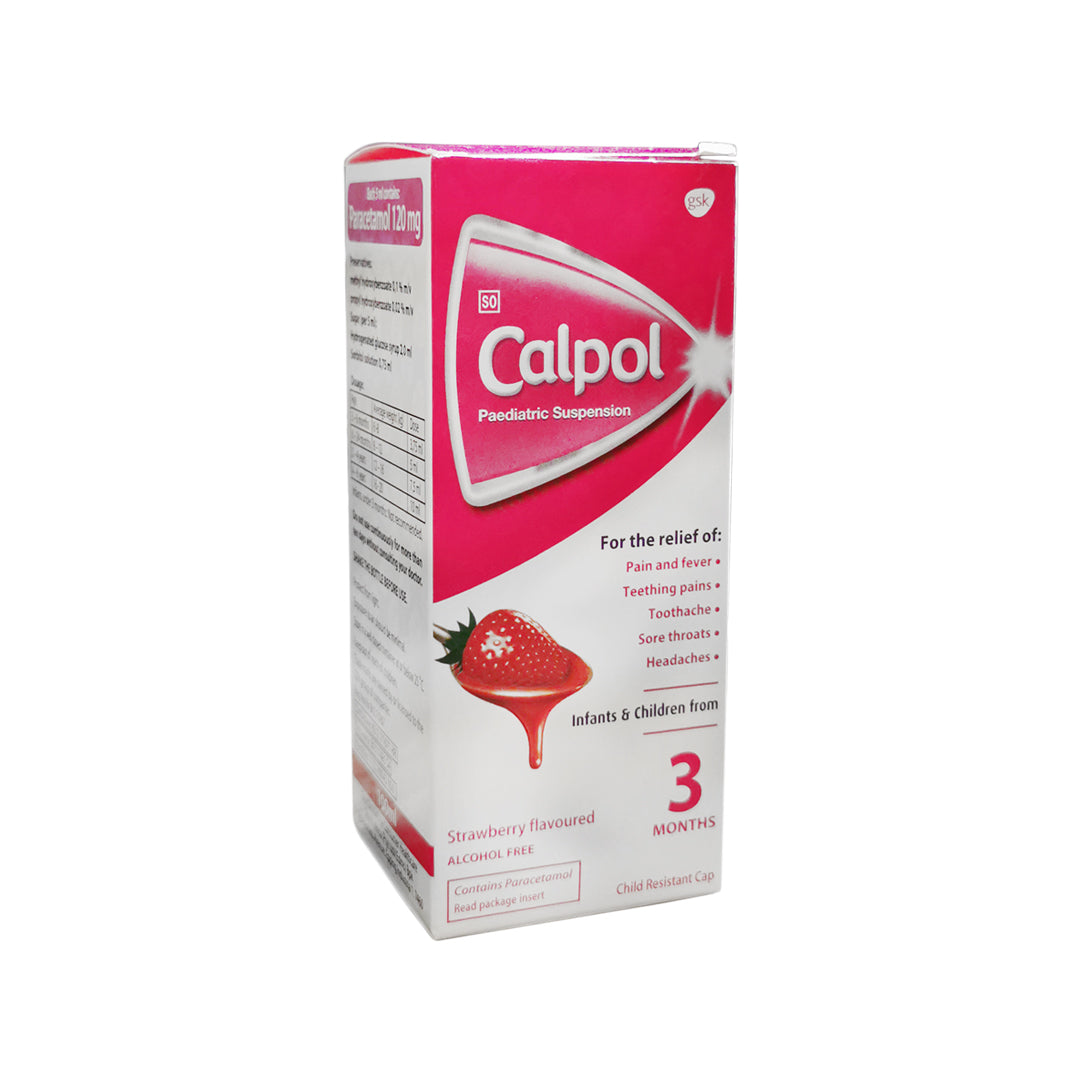Description
Calpol Paediatric Suspension Strawberry 100ml can be used for a variety of aches that trouble your bundle of joy, including toothaches, headaches, teething pains and sore throats. It also helps with pain and fever associated with colds and contains no alcohol or sugars.
For the relief of:
- pain and fever
- teething pains
- toothache
- sore throats
- headaches
Pack Size: 100ml
Direction and Dosage:
Dosage and directions for use: Do not exceed the recommended dose. Shake the bottle before use. Three months to < 1 year: 1/2 medicine measure (2.5ml). 1 to 2 years: 1 medicine measure (5.0ml). 3 to 6 years: 2 medicine measures (10.0ml). Infants under three months: not recommended. May be given three to four times daily but with an interval of 4 hours between each dose. Consult your doctor if no relief is obtained with the recommended dosage. Do not use continuously for longer than ten days without consulting your doctor. Treatment for paracetamol overdosage: Although evidence is limited it is recommended that any adult person who has ingested 5-10 grams or more of paracetamol (or a child who has had more than 140 mg/kg) within the preceding four hours, should have the stomach emptied by lavage (emesis may be adequate for children) and a single dose of 50 g activated charcoal given via the lavage tube. Ingestion of amounts of paracetamol smaller than this may require treatment in patients susceptible to paracetamol poisoning (see above). In patients who are stuperose or comatose endotracheal intubation should precede gastric lavage in order to avoid aspiration. N-acetylcysteine should be administered to all cases of suspected overdose as soon as possible preferably within eight hours of overdosage, although treatment up to 36 hours after ingestion may still be of benefit, especially if more than 150 mg/kg of paracetamol was taken. An initial dose of 150 mg/kg N-acetylcysteine in 200 ml dextrose injection given intravenously over 15 minutes, followed by an infusion of 50 mg/kg in 500 ml dextrose injection over the next four hours, and then 100 mg/kg in 1000 ml dextrose injection over the next sixteen hours. The volume of intravenous fluid should be modified for children. Although the oral formulation is not the treatment of choice, 140 mg/kg dissolved in water may be administered initially, followed by 70 mg/kg every four hours for seventeen doses. A plasma paracetamol level should be determined four hours after ingestion in all cases of suspected overdosage. Levels done before four hours may be misleading. Patients at risk of liver damage, and hence requiring continued treatment with N-acetylcysteine, can be identified according to their 4-hour plasma paracetamol level. The plasma paracetamol level can be plotted against time since ingestion in the nomogram below. The nomogram should be used only in relation to a single acute ingestion. Those whose plasma paracetamol levels are above the "normal treatment line", should continue N- acetylcysteine treatment with 100 mg/kg IV over sixteen hours repeatedly until recovery. Patients with increased susceptibility to liver damage as identified above, should continue treatment if concentrations are above the "high risk treatment line". Prothrombin index correlates best with survival. Monitor all patients with significant ingestions for at least ninety six hours. Dosage: 3 - 4 times daily (with intervals of 4 hours between each dosage). 3 months to < 1 year: 1/2 medicine measure (2.5ml). 1 to 2 years: 1 medicine measure (5ml). 3 to 6 years: 2 medicine measures (10ml). Infants under 3 months: not recommended. Shake the bottle before use.
Storage instructions:
Protect from light. Exposure to air should be minimal. Store in a well closed container at or below 25 degrees C.

